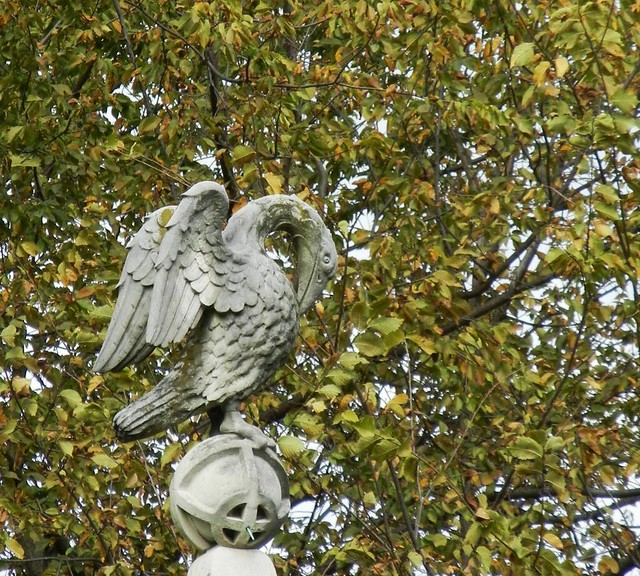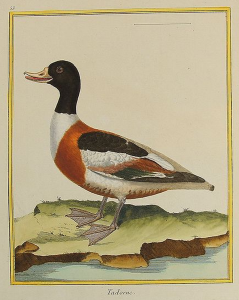Even if, like Augustine, we’re not certain whether to believe it or not, everyone has at least heard of the sacrifice of the mother pelican, who opens her own breast to nourish her young with the blood.
We may be less familiar, however, with the story of the generous vulpanser, another remarkable example of selfless love in the bird world.
According to the Italian iconographer and emblematist Ioannes Pierius Valerianus,
when the Egyptian priests wished to denote parents’ love for their children, they used the hieroglyph of the vulpanser.
He reports that
this bird attends to its offspring with so great a love that should it ever happen that it encounters hunters and finds that it and its chicks have been spotted, both father and mother rush to surrender themselves to the hunters and to draw their attention away from the young…. And so it seemed to the Egyptians that an animal of such piety should be regarded with great veneration.
The British, Pierius tells us, once considered this bird the finest of foods, but by the time of Caesar, they too had decided that it was a sacred creature not to be eaten.
But what is it, this vulpanser, this “fox-goose”?
Buffon knows:
one can readily see, thanks to one of the natural attributes of the bird — more decisively than by any erudite conjecture — that the name belongs exclusively to … the only species in which one can discover a unique and singular similarity to the fox, namely, its finding shelter, like the fox, in a burrow.
The vulpanser of the ancients and the not-so-ancients is the common shelduck,
first designated by the name “renard-oie”; not only does this bird shelter itself like a fox, but it nests and lays its eggs in holes which it normally expropriates from rabbits.
Not very nice to the rabbits — but at least they love their offspring.




